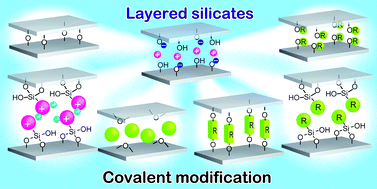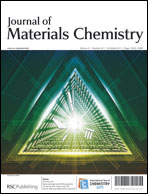Layered silicates, whose frameworks are composed of only SiO4 tetrahedra, provide many interesting properties through covalent modification of interlayer SiOH/SiO−groups. This review summarizes covalent modifications of layered silicates, such as magadiite, kanemite, kenyaite, layered octosilicate (RUB-18 or ilerite), and layered zeolitic materials (or their precursors). Interlayer silanol groups can be modified with various silylation reagents including alkyl, amino, and thiol groups. Anion exchangeable layered hybrids are obtained by immobilization of imidazolium groups, and are exfoliated into monolayer nanosheets in water. New crystalline silicate structures are obtained by precisely designed silylation of octosilicate. Silanol groups of layered silicates are esterified with some alcohols. Condensation of silanol groups in the same layer is effective for intercalation of bulky nonionic surfactants. Topotactic conversion through interlayer condensation of silanol groups leads to the formation of 3-D zeolite structures. Expansion of the pores of zeolites is achieved by pillaring through covalent modification. These covalent modifications of layered silicates make it possible to design for practical applications.

You have access to this article
 Please wait while we load your content...
Something went wrong. Try again?
Please wait while we load your content...
Something went wrong. Try again?


 Please wait while we load your content...
Please wait while we load your content...